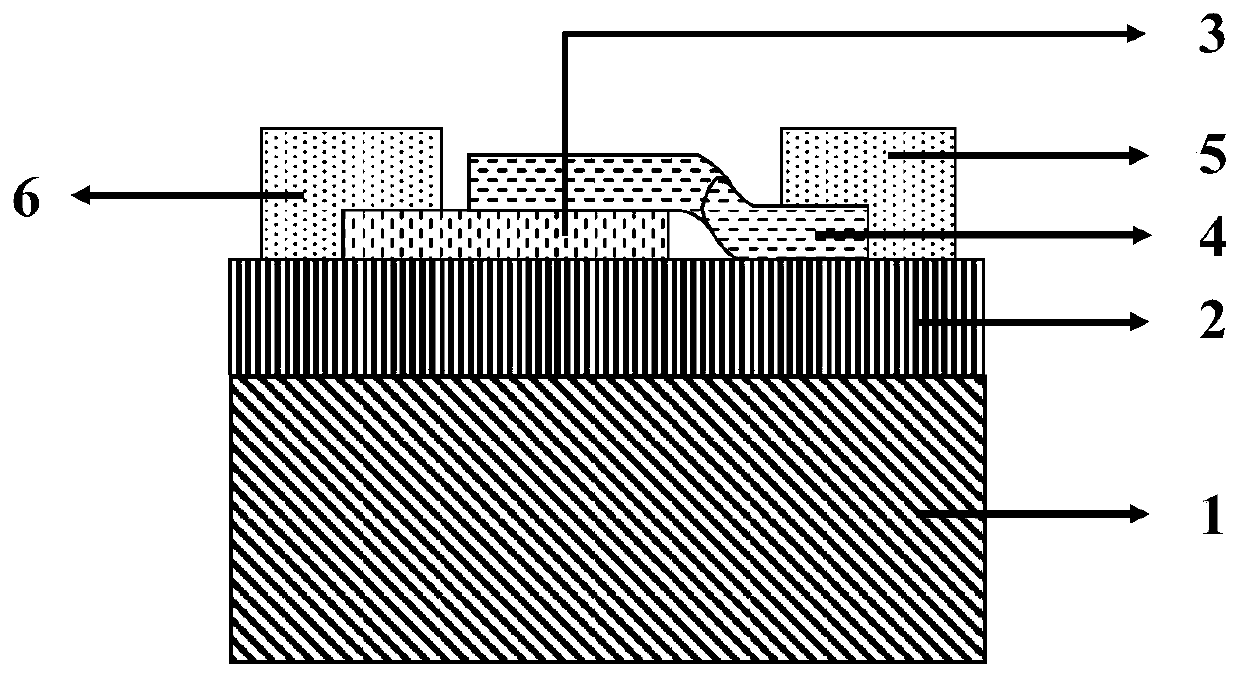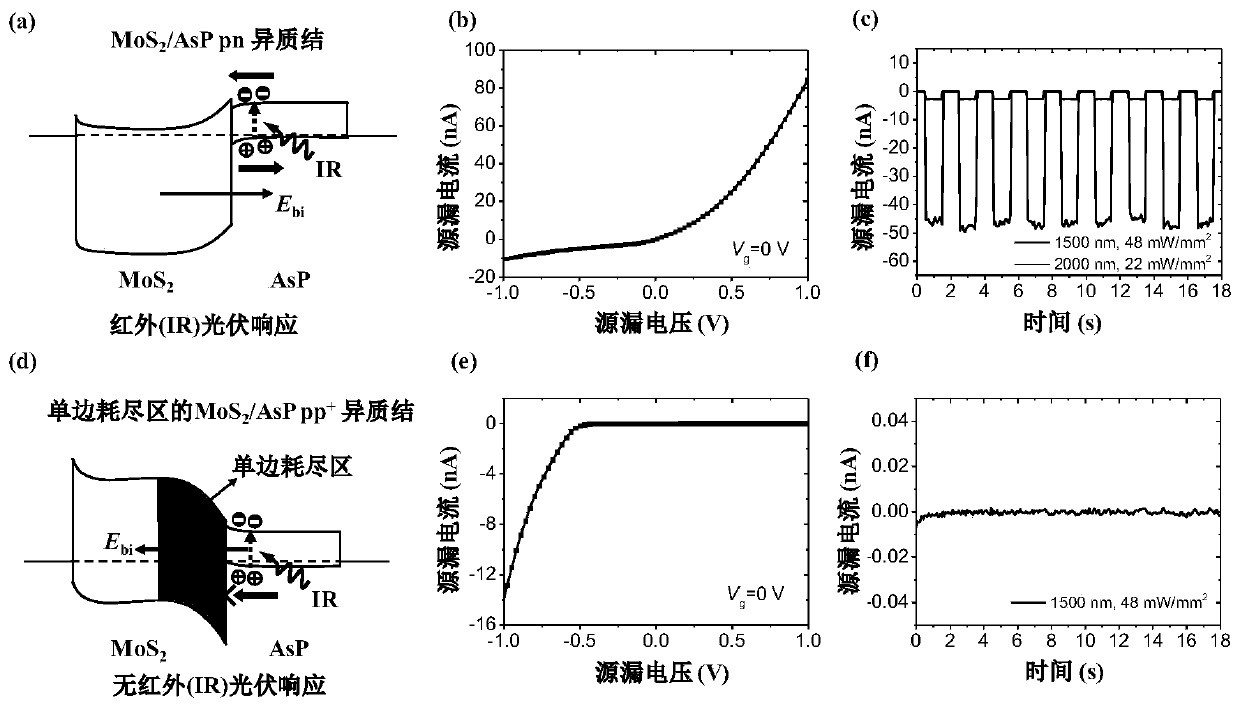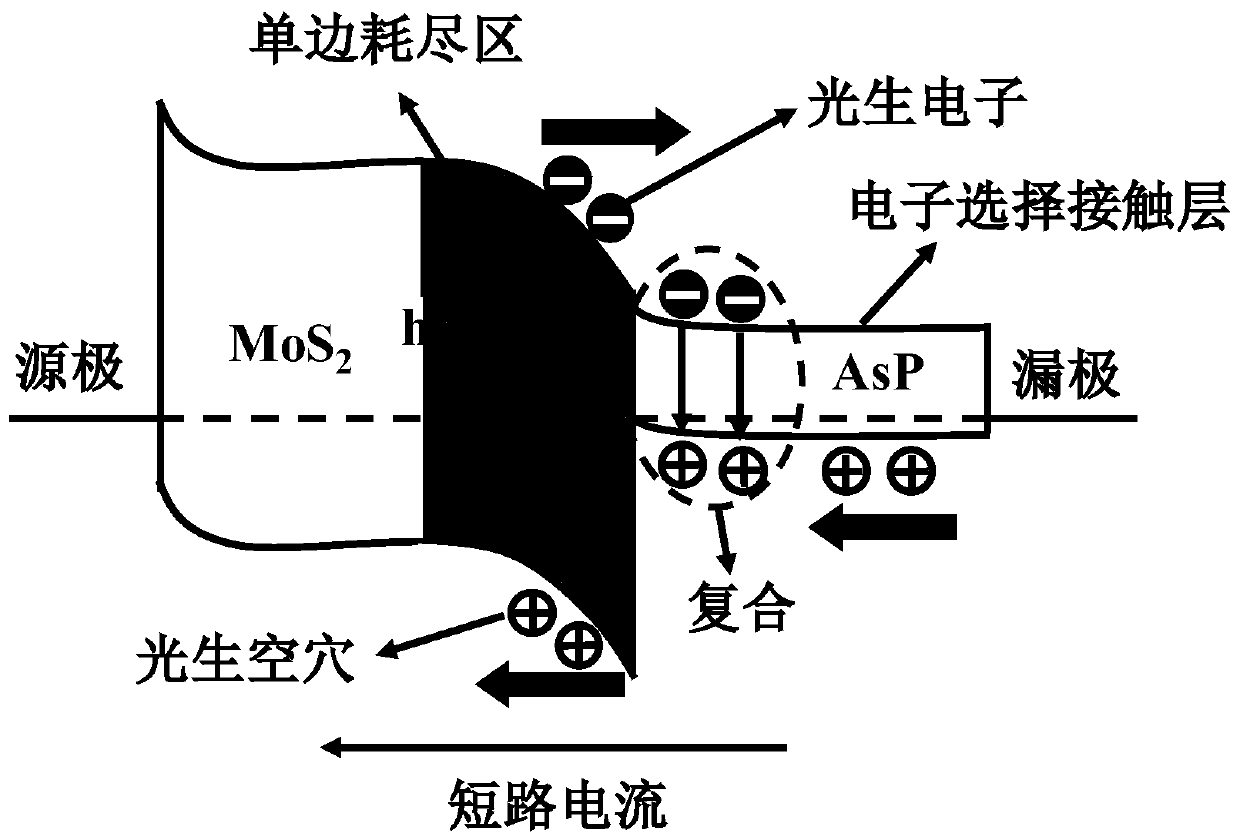Efficient and rapid Van der Waals heterojunction detector with unilateral depletion region and preparation method
A heterojunction detector and depletion region technology, applied in the field of van der Waals heterojunction, can solve the problems of reducing the quantum efficiency of the device, slowing the response time of the device, depletion of carriers, etc., so as to reduce the trapping effect of interface defects, Fast response and high quantum efficiency
- Summary
- Abstract
- Description
- Claims
- Application Information
AI Technical Summary
Problems solved by technology
Method used
Image
Examples
Embodiment Construction
[0027] The specific embodiment of the present invention is described in detail below in conjunction with accompanying drawing:
[0028] The invention develops a van der Waals heterojunction detector with a unilateral depletion region. Through two-dimensional p-type MoS 2 Stacking with p-type AsP forms a unilaterally depleted van der Waals heterojunction, thereby reducing interface recombination and interface defect trapping effects, and improving quantum efficiency, photoelectric conversion efficiency, and response speed.
[0029] Specific steps are as follows:
[0030] 1. Preparation and transfer of AsP flakes
[0031] In a nitrogen-protected glove box, AsP bulk single crystals were placed on Schott blue tape, pasted repeatedly, and AsP flakes of different thicknesses were mechanically peeled off using the adhesive force of the tape. Using PDMS to transfer the fabricated AsP flakes to SiO 2 substrate surface. Under an optical microscope, AsP flakes of a specific thicknes...
PUM
| Property | Measurement | Unit |
|---|---|---|
| thickness | aaaaa | aaaaa |
| thickness | aaaaa | aaaaa |
| thickness | aaaaa | aaaaa |
Abstract
Description
Claims
Application Information
 Login to View More
Login to View More - R&D
- Intellectual Property
- Life Sciences
- Materials
- Tech Scout
- Unparalleled Data Quality
- Higher Quality Content
- 60% Fewer Hallucinations
Browse by: Latest US Patents, China's latest patents, Technical Efficacy Thesaurus, Application Domain, Technology Topic, Popular Technical Reports.
© 2025 PatSnap. All rights reserved.Legal|Privacy policy|Modern Slavery Act Transparency Statement|Sitemap|About US| Contact US: help@patsnap.com



